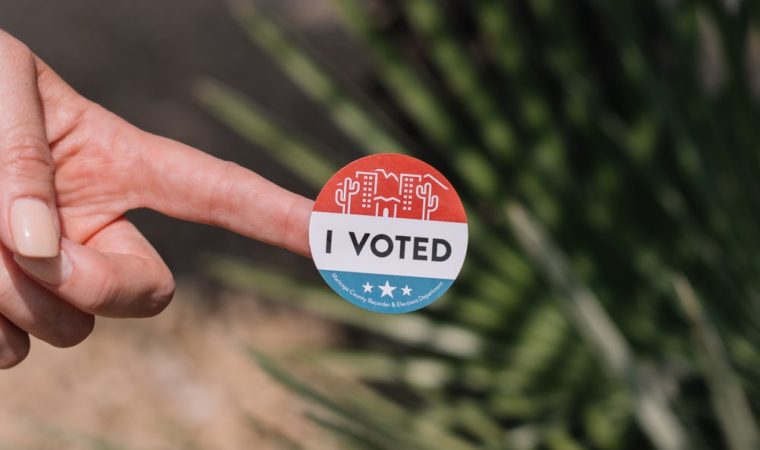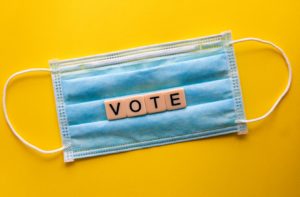Voting Rights for Voters with Disabilities
CURRENT LANDSCAPE OF VOTING RIGHTS FOR VOTERS WITH DISABILITIES:
- Voting is a fundamental part of our democracy and, as such, should be accessible to all Americans, including Americans with disabilities. Federal law provides some protections for voters with disabilities, requiring all polling locations and voting methods to be accessible for all eligible voters in federal elections. Many states also implement these protections for state elections and some provide further protections for voters with disabilities.
For state by state information, you can call the voter hotline at (866) 687-8683.
Americans with Disabilities Act (ADA):
- The ADA is a federal law, passed in 1990, that protects people with disabilities from being treated unequal in all aspects of life. The ADA requires that state and local governments provide people with disabilities a full and equal opportunity to vote, including the opportunity to vote in person. It requires polling locations to be accessible by requiring all public entities, which would include election offices, to select and use facilities that do not exclude people with disabilities from their services or activities.
Help America Vote Act (HAVA):
- The HAVA was passed by Congress in 2002 and, in addition to a number of other provisions related to voting, it included some protections for voters with disabilities. The law requires polling locations to have at least one accessible voting machine that provides people with disabilities with the same opportunity as other voters to vote privately and independently.
- Although federal protections for voters with disabilities do exist, they are not always enforced on a local level. Many voters with disabilities find that their polling locations or voting machines are not fully accessible. The Department of Justice’s Civil Rights Division is responsible for enforcing federal voting laws and, in the past, has filed lawsuits in a number of counties to ensure compliance with ADA for polling locations.
BASIC VOTING RIGHTS OF VOTERS WITH DISABILITIES:
Voter Registration:
- The National Voter Registration Act of 1993 (NVRA) requires all offices that provide public assistance or state-funding programs that primarily serve people with disabilities to provide the opportunity to register to vote.
- All public voter registration sites must be accessible and states must provide assistance to persons with disabilities who want to register.
Polling Places – Location, Assistance, and Early Voting:
All voters have a right to cast a private and independent ballot, including voters with disabilities. All voters with a disability have the right to request assistance and can choose someone to help them vote:
- the assistant can be a poll worker or someone of their choosing they bring with them;
- the assistant may not be their employer/supervisor or a representative of their employer or a representative or official of the voter’s union, but it can be a member of their union;
- assistance can include communication, reading them the ballot titles, offices, candidates or issues/ measures and marking their ballot choices for them; or helping operate the accessible voting machine;
- and the assistant may be asked to take an oath, administered by the poll worker(s), before offering assistance.
- All polling locations including vote centers, early vote locations and county elections offices that provide for voting must meet the physical access standards for a polling place defined in the Americans with Disabilities Act.
These include:
- accessible parking spaces,
- accessible restrooms,
- clear path of travel to accommodate wheelchairs and mobility devices (this includes path of travel from the street, parking or sidewalk),
- accommodate individuals who are blind or low vision, deaf or hard of hearing, do not walk, have dexterity issues, do not speak or have a cognitive, developmental or intellectual disability.
- If a public entity is unable to create an accessible voting place for a particular precinct, they must use an alternative method to provide accessible voting, such as curbside voting with appropriate assistance and guidance for voters.
Voting Machines and Communication:
- The Help America Vote Act requires that all polling locations for federal elections, including vote centers, early vote locations and county elections offices must have at least one accessible voting system. The states must ensure that these systems are functioning and that election officials have been trained to operate them.
- State election officials must provide communication with voters with disabilities that is as effective as communications provided to others. This may include providing auxiliary aids and services.
- Voters with disabilities using any voting system have a right to cast their ballot with privacy.
- Voters with disabilities have the right to ask for any of these accommodations without question of their disability by a poll worker, other voter, political party or organization, or any other individual.
PROBLEMS AFFECTING VOTERS WITH DISABILITIES AND SOLUTIONS:
- You are not in possession of a valid voter ID:
- Connect people to resources for a free ID. Some states that require a form of voter ID have services to help people get a free ID just for voting. Organizations like Spread The Vote and VoteRiders work with eligible voters to get them government-issued photo IDs.
- Voting Machines that are not accessible:
- The Help America Vote Act requires that all polling locations for federal elections, including vote centers, early vote locations and county elections offices, must have at least one accessible voting system that provides voters with disabilities with the same opportunity as other voters to vote privately and independently.
The requirements include:
- There should be enough clearance around the voting machine so that a person with a disability has room and privacy to use the voting machine.
- The highest operable part of a voting machine should be no higher than 48 inches to be wheelchair accessible.
- To vote at counters or tables, the writing surface should provide knee and toe clearance so that a voter who uses a wheelchair may sit at and use the counter or table.
- If you arrive at your polling location and do not feel as though the method you’re being instructed to use to vote provides you with the opportunity to vote privately and independently, you can ask the poll workers to provide you with the means to do so.
- Ahead of Election Day you can educate yourself on the types of voting machines used in your polling locations using Verified Voting, www.VerifiedVoting.org. Learn about how the machines you’ll be voting on work and reach out to your local election officials if you have any questions about the machines, or to advocate for their replacement if you think they are insufficient.
- Problems getting assistance while voting:
- All voters with a disability have the right to request and receive assistance in marking their ballot from a family member, friend, or poll worker. Make sure you are well informed about your voting rights and ask for assistance if you need it while voting. Voter education can go a long way towards ensuring that every voter with a disability feels empowered and prepared to vote.
- If you feel intimidated or are encountering resistance while asking for assistance when trying to vote, please reach out to (866) 687-8683.
- Polling locations that are not accessible:
- There are certain requirements that apply to polling locations:
- Parking: If voters can park by the polling place, accessible parking for people with disabilities also has to be provided. An accessible space has (1) the parking space, (2) access aisle adjacent to the space that is wide enough to allow voters with a mobility disability to get out of their car or van, and (3) signage designating it as an accessible space. The 2010 Standards require one accessible parking space per 25 parking spaces provided.
- Passenger drop-off: Some voters will be driven to the polling place. If the polling place has drop-off areas, then one of must be accessible, meaning that the drop-off area must have a level access aisle next to the vehicle space.
- Building entry: There must be an accessible route from the parking space, passenger drop-off site, sidewalk and walkway, and public transportation stop to the entrance of the voting facility. Whenever possible, the accessible route must be the same as or near the general circulation path. Inside the building, there must be an accessible route from the door to the voting area. The route cannot include abrupt changes in level, steps, high thresholds, or steeply sloped walkways. If the accessible route is different from the general path, a sign is required to direct voters that need to utilize the accessible route. If any part of the accessible route has a slope greater than 1:20, it is considered a ramp and must meet the requirements of a ramp. If any part of the accessible route has steps, it must be ramped, even if it is only one short step.
- If the polling location does not comply with these requirements when you arrive on Election Day, see if the poll workers will provide you with a curbside voting option. Some states do provide curbside voting, but in some cases access can vary from county to county. If possible, bring someone with you when you vote on Election Day to help facilitate curbside voting, if needed and available.
- If you are concerned about long lines on Election Day, but want to be able to vote in person, call your county election office ahead of time to see if your county will let you move to the front or ask the poll worker on Election Day to see if this is an option. You can also call your county elections office to see if you can vote in person ahead of Election Day to avoid the line.
- If there’s a polling location you know is not ADA compliant, you can file an ADA complaint to your local elections office and the Department of Justice, www.ada.gov/complaint/.
- Voting from home:
- If you are a voter with a disability, most states will allow you to vote by mail. Deadlines to apply for an absentee or vote by mail ballot vary on a state-by state basis. Plan ahead for application deadlines to request your vote-by-mail ballot, and for deadlines to return your vote by mail ballot.
- Some states allow voters with a disability to obtain permanent absentee ballot status. Check with your local election official to see if permanent absentee ballot status is available in your state and find out how to apply.
- If needed, plan for someone to assist you in requesting and mailing your vote by mail ballot. Some states require a witness or two for either the ballot or request form. Make sure you’re familiar with the requirements for your state so that you are able to submit your application and ballot on time.
ADDITIONAL SOURCES OF INFORMATION:
- ADA Checklist for Polling Places, https://www.ada.gov/votingchecklist.pdf
- The Americans with Disabilities Act and Other Federal Laws Protecting the Rights of Voters with Disabilities, https://www.ada.gov/ada_voting/ada_voting_ta.htm
For additional help or questions please visit https://iwillvote.com/.

